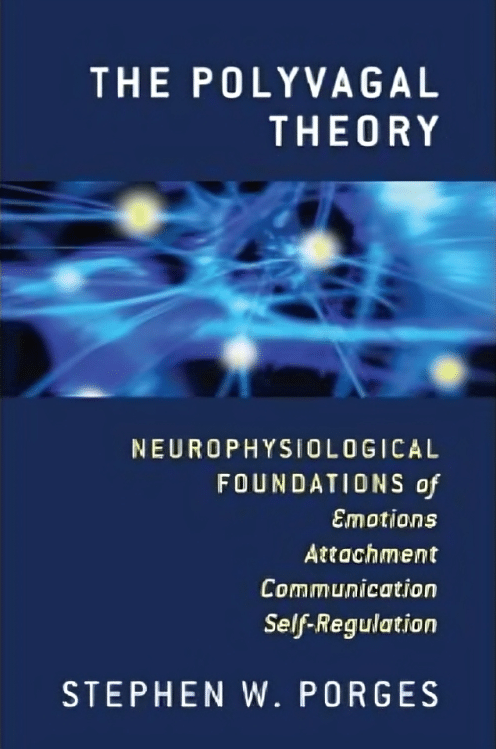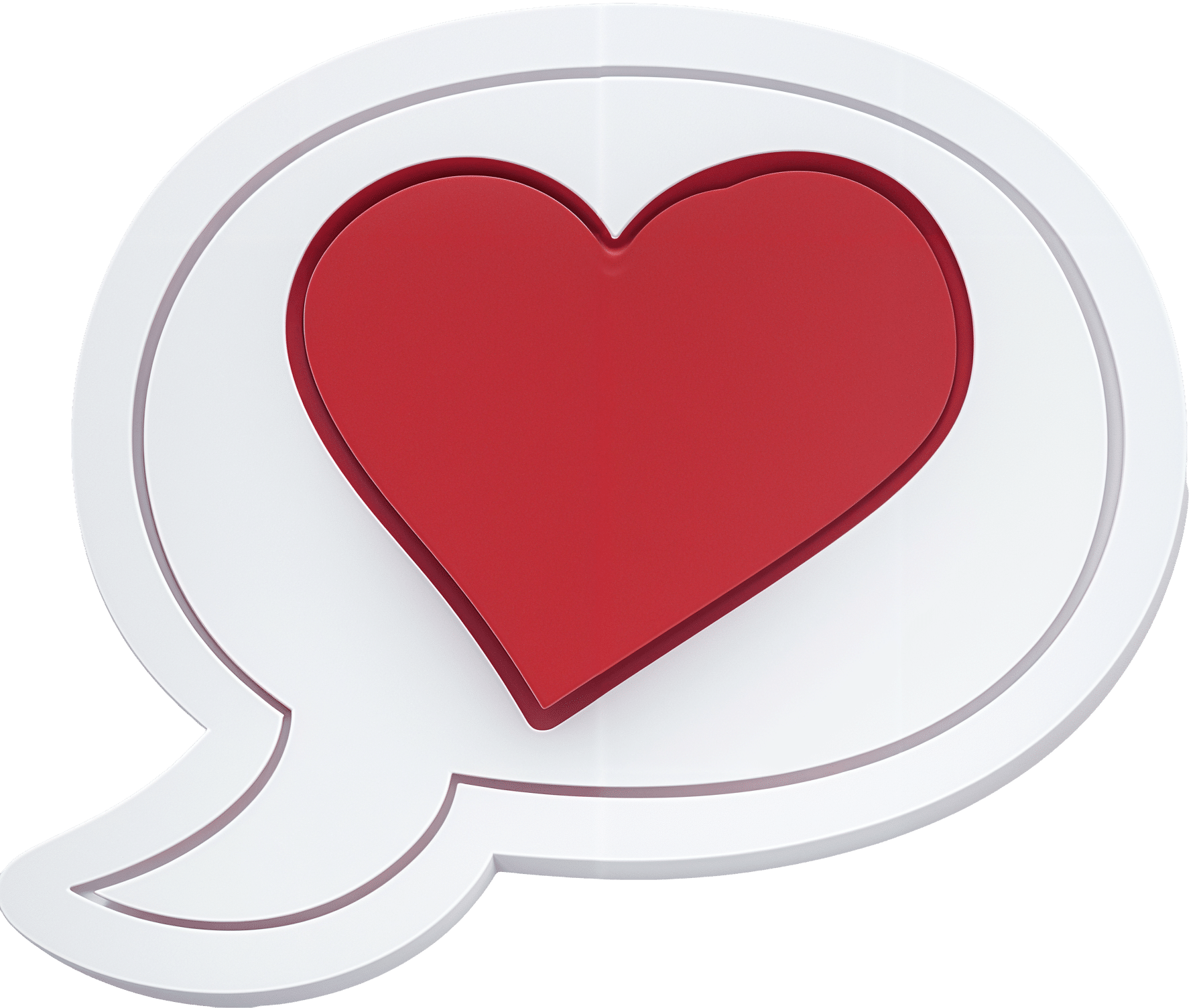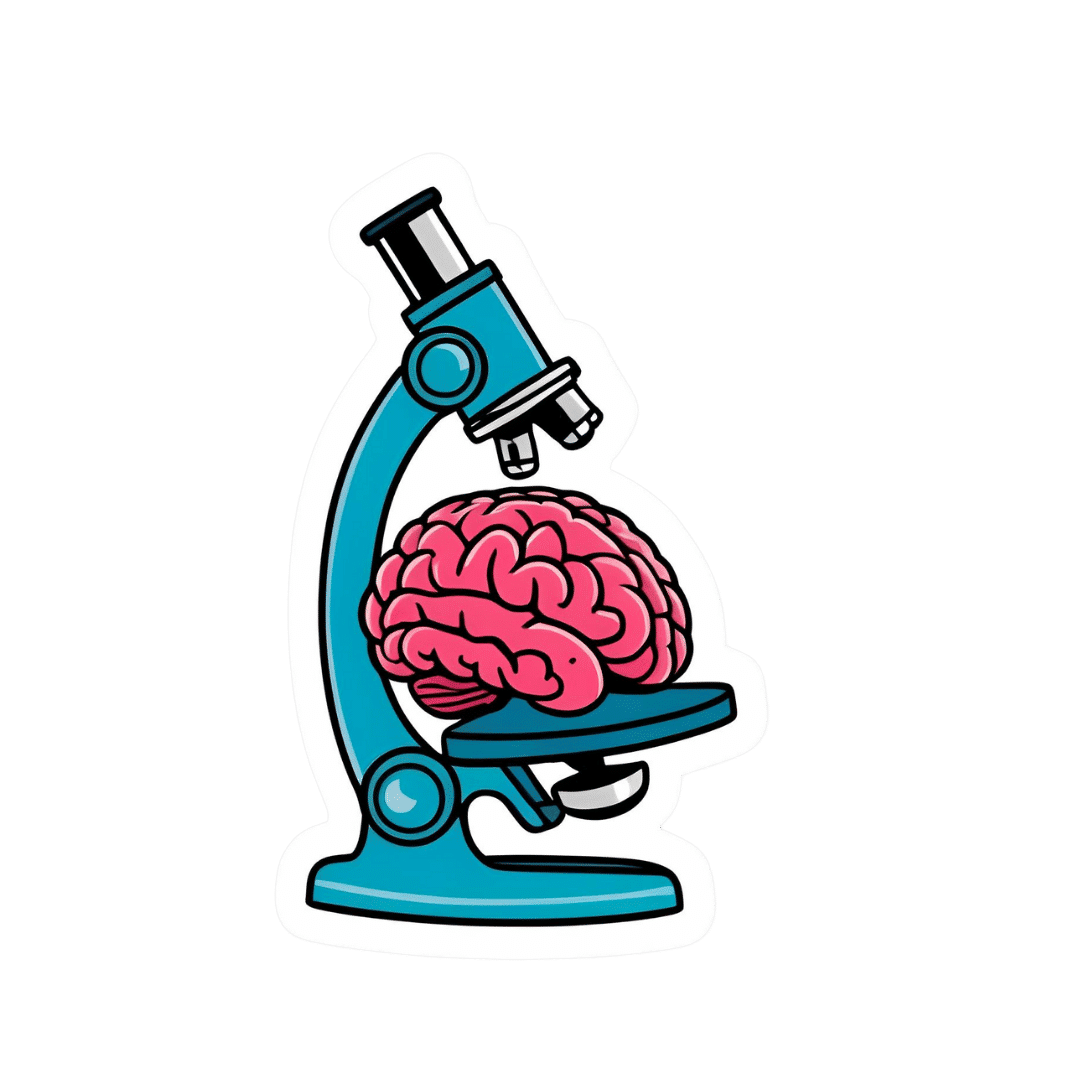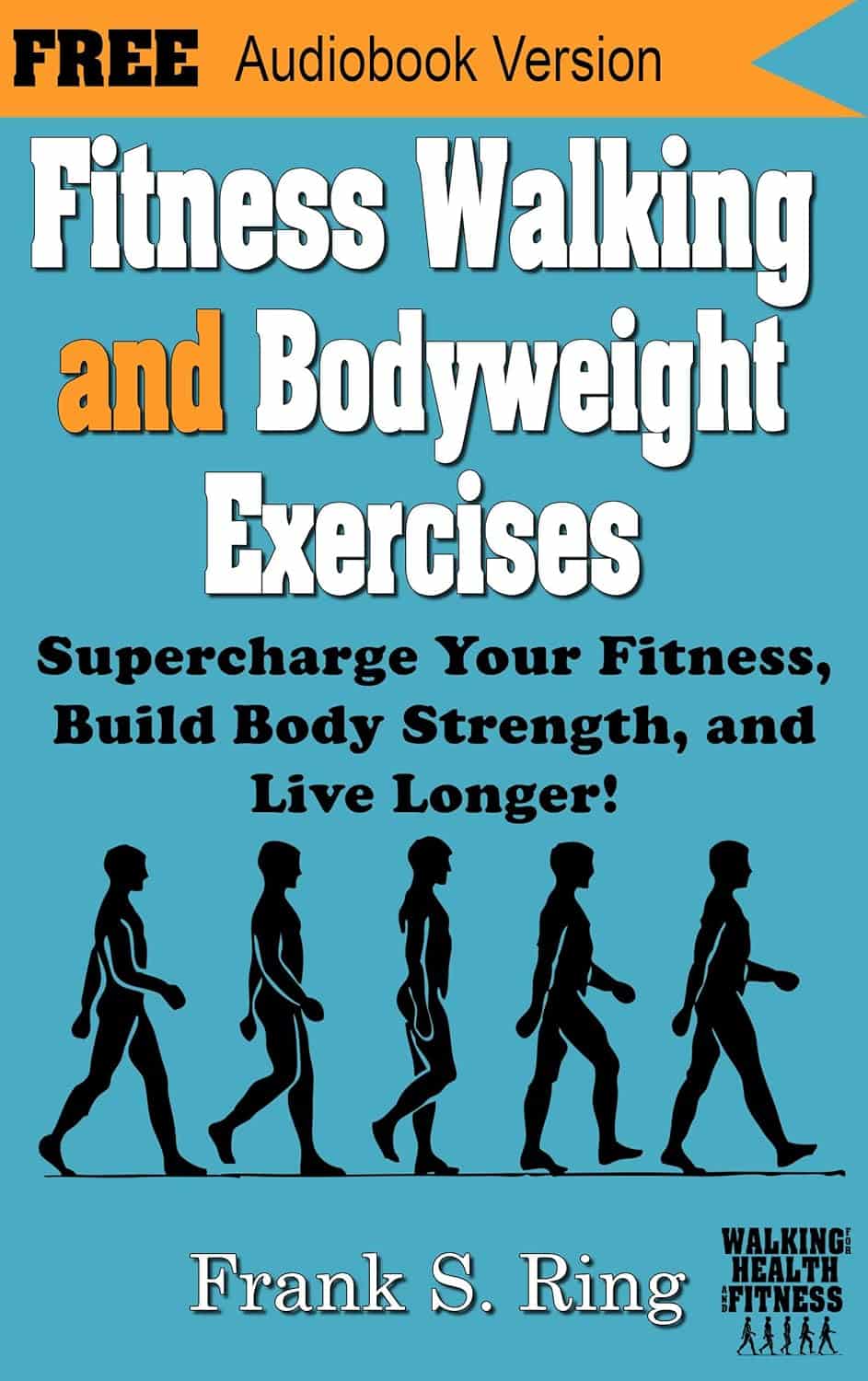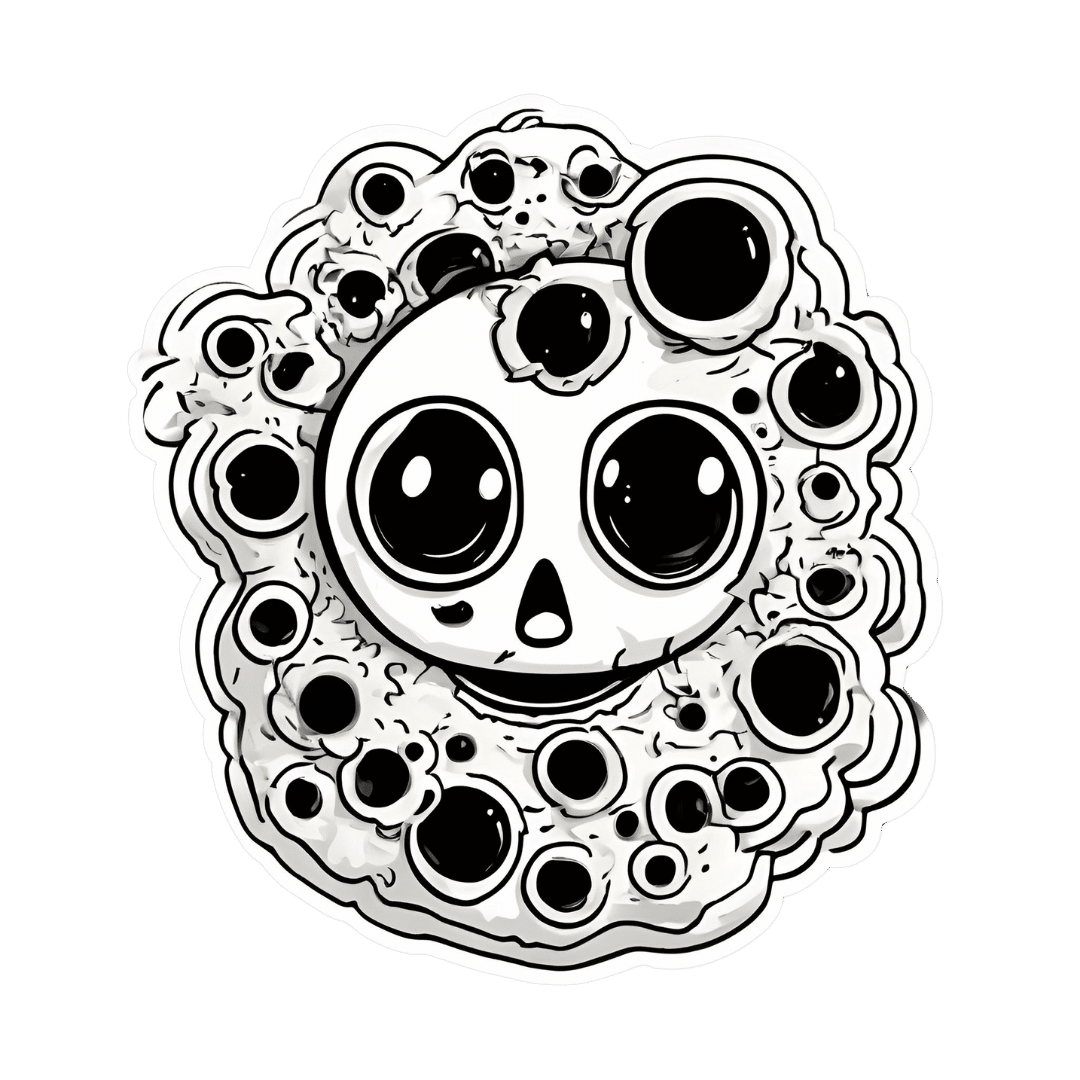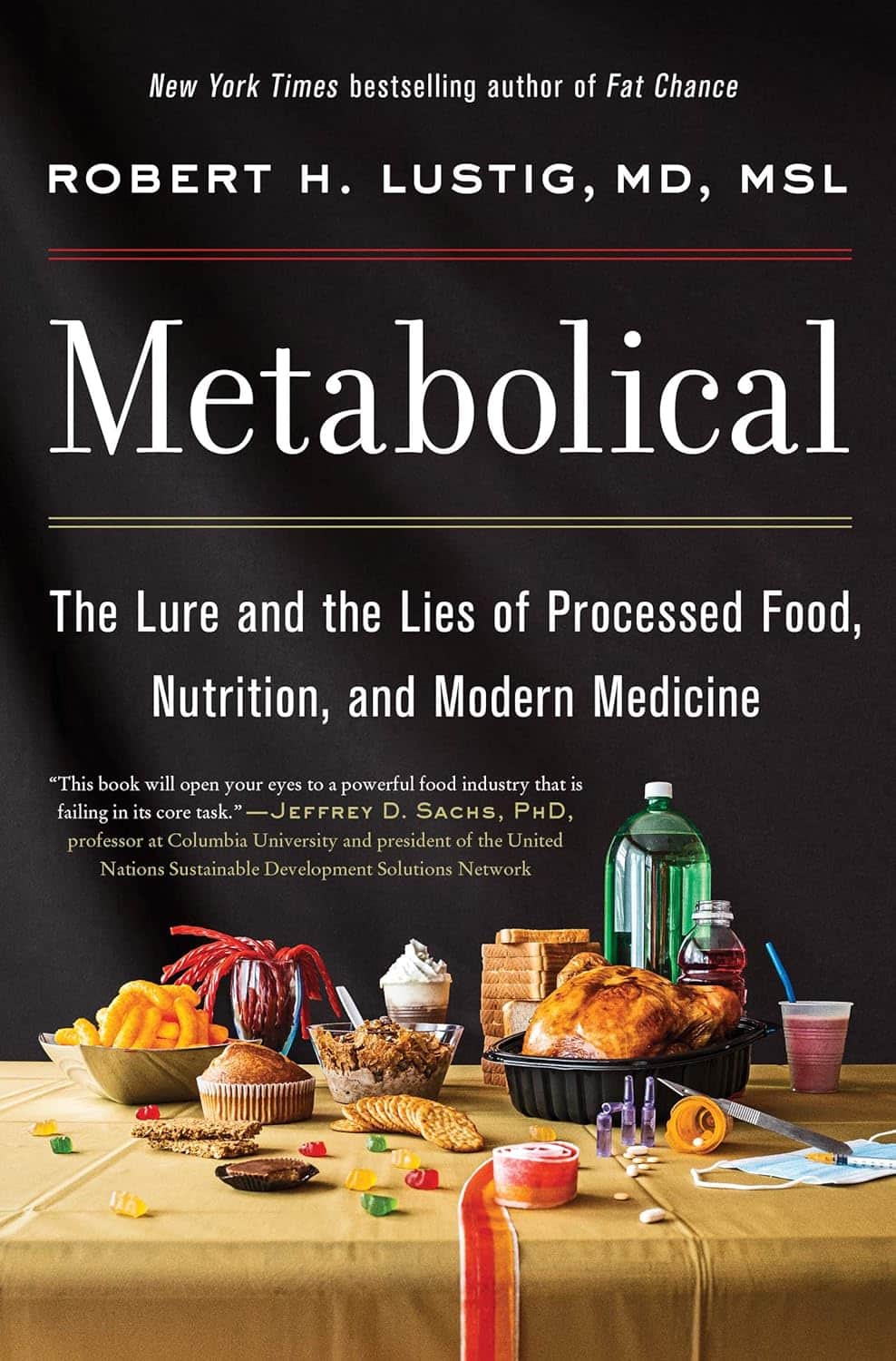
Metabolical – by Dr. Robert Lustig
10almonds is reader-supported. We may, at no cost to you, receive a portion of sales if you purchase a product through a link in this article.
The premise of this book itself is not novel: processed food is bad, food giants lie to us, and eating better makes us less prone to disease (especially metabolic disease).
What this book does offer that’s less commonly found is a comprehensive guide, a walkthrough of each relevant what and why and how, with plenty of good science and practical real-world examples.
In terms of unique selling points, perhaps the greatest strength of this book is its focus on two things in particular that affect many aspects of health: looking after our liver, and looking after our gut.
The style is… A little dramatic perhaps, but that’s just the style; there’s no hyperbole, he is stating well-established scientific facts.
Bottom line: very much of chronic disease would be a lot less diseasey if we all ate with these aspects of our health in mind. This book’s a comprehensive guide to that.
Click here to check out Metabolical, and let food be thy medicine!
Don’t Forget…
Did you arrive here from our newsletter? Don’t forget to return to the email to continue learning!
Recommended
Learn to Age Gracefully
Join the 98k+ American women taking control of their health & aging with our 100% free (and fun!) daily emails:
-
The 5 Love Languages Gone Wrong
10almonds is reader-supported. We may, at no cost to you, receive a portion of sales if you purchase a product through a link in this article.
Levelling up the 5 love languages
The saying “happy wife; happy life” certainly goes regardless of gender, and if we’re partnered, it’s difficult to thrive in our individual lives if we’re not thriving as a couple. So, with the usual note that mental health is also just health, let’s take a look at getting beyond the basics of a well-known, often clumsily-applied model:
The 5 love languages
You’re probably familiar with “the 5 love languages”, as developed by Dr. Gary Chapman. If not, they are:
- Acts of Service
- Gift-Giving
- Physical Touch
- Quality Time
- Words of Affirmation
The idea is that we each weight these differently, and problems can arise when a couple are “speaking a different language”.
So, is this a basic compatibility test?
It doesn’t have to be!
We can, if we’re aware of each other’s primary love languages, make an effort to do a thing we wouldn’t necessarily do automatically, to ensure they’re loved the way they need to be.
But…
What a lot of people overlook is that we can also have different primary love languages for giving and for receiving. And, missing that can mean that even taking each other’s primarily love languages into account, efforts to make a partner feel loved, or to feel loved oneself, can miss 50% of the time.
For example, I (your writer here today, hi) could be asked my primary love language and respond without hesitation “Acts of Service!” because that’s my go-to for expressing love.
I’m the person who’ll run around bringing drinks, do all the housework, and without being indelicate, will tend towards giving in the bedroom. But…
A partner trying to act on that information to make me feel loved by giving Acts of Service would be doomed to catastrophic failure, because my knee-jerk reaction would be “No, here, let me do that for you!”
So it’s important for partners to ask each other…
- Not: “what’s your primary love language?” ❌
- But: “what’s your primary way of expressing love?” ✅
- And: “which love language makes you feel most loved?” ✅
For what it’s worth, I thrive on Words of Affirmation, so thanks again to everyone who leaves kind feedback on our articles! It lets me know I provided a good Act of Service
So far, so simple, right? You and your partner (or: other person! Because as we’ve just seen, these go for all kinds of dynamics, not just romantic partnerships) need to be aware of each other’s preferred love languages for giving and receiving.
But…
There’s another pitfall that many fall into, and that’s assuming that the other person has the same idea about what a given love language means, when there’s more to clarify.
For example:
- Acts of Service: is it more important that the service be useful, or that it took effort?
- Gift-Giving: is it better that a gift be more expensive, or more thoughtful and personal?
- Physical Touch: what counts here? If we’re shoulder-to-shoulder on the couch, is that physical touch or is something more active needed?
- Quality Time: does it count if we’re both doing our own thing but together in the same room, comfortable in silence together? Or does it need to be a more active and involved activity together? And is it quality time if we’re at a social event together, or does it need to be just us?
- Words of Affirmation: what, exactly, do we need to hear? For romantic partners, “I love you” can often be important, but is there something else we need to hear? Perhaps a “because…”, or perhaps a “so much that…”, or perhaps something else entirely? Does it no longer count if we have to put the words in our partner’s mouth, or is that just good two-way communication?
Bottom line:
There’s a lot more to this than a “What’s your love language?” click-through quiz, but with a little application and good communication, this model can really resolve a lot of would-be problems that can grow from feeling unappreciated or such. And, the same principles go just the same for friends and others as they do for romantic partners.
In short, it’s one of the keys to good interpersonal relationships in general—something critical for our overall well-being!
Share This Post
-
Correct An Upper Spine Hump (Simple Stretch & Exercise)
10almonds is reader-supported. We may, at no cost to you, receive a portion of sales if you purchase a product through a link in this article.
Generally called a neck hump in this video, it can be in the cervical (neck) vertebrae or it can be in the thoracic (upper back) vertebrae. It’s also known as a dowager’s hump, buffalo hump, or kyphosis.
However, it can be fixed:
What to do
First understand the cause: it generally comes from poor posture, especially from prolonged desk work or phone use.
With that in mind…
- Posture adjustments: lean back in a chair to counter gravity’s pull on your head. Avoid slumping; keep your head aligned with your spine.
- Stretching: lie flat on the floor without pillows to restore spinal alignment. Gradually reduce pillow height during sleep to decrease neck hyperflexion.
- Neck retraction: pull chin straight back while keeping your eyes looking forwards. Hold for 15 seconds, gradually increasing to 60 seconds. Perform 10 repetitions, resting between sets.
- Strengthening: lean forward and pull the chin back against gravity. Hold, or repeat for 10 repetitions. Over time, increase duration to a minute.
For more on all of this plus visual demonstrations, enjoy:
Click Here If The Embedded Video Doesn’t Load Automatically!
Want to learn more?
You might also like to read:
The Pains That Good Posture Now Can Help You Avoid Later
Take care!
Share This Post
-
This Week In Brain News
10almonds is reader-supported. We may, at no cost to you, receive a portion of sales if you purchase a product through a link in this article.
While reading this week’s health news, we’ve singled out three brain-related articles to feature here:
Bad breath now, bad brain later?
Researchers found links between oral microbiome populations, and changes in brain function with aging. The short version is indeed “bad breath now = bad brain later”, but more specifically:
- People who had large numbers of the bacteria groups Neisseria and Haemophilus had better memory, attention and ability to do complex tasks
- People who had higher levels of Porphyromonas had more memory problems later
- People with a lot of Prevotella tended to predict poorer brain health and was more common in people who carry the Alzheimer’s Disease risk gene, APOE4.
If you’ve never heard of half of those, don’t worry: mostly your oral microbiome can take care of itself, provide you consistently do the things that create a “good” oral microbiome. So, see our “related” link below:
Read in full: Mouth bacteria may hold insight into your future brain function
Related: Improve Your Oral Microbiome
Weeding out a major cause of cognitive decline
Cannabis may be great for relaxation, but regular use is not great for mental sharpness, and recent use (even if not regular, and even if currently sober) shows a similar dip in cognitive abilities, especially working memory. In other words, cannabis use for relaxation should be at most an occasional thing, rather than an everyday thing.
While the results of the study are probably not shocking, something that we found interesting was their classification system:
❝Heavy users are considered young adults who’ve used cannabis more than 1000 times over their lifetime. Whereas, using 10 to 999 times was considered a moderate user, and fewer than 10 times was considered a non-user.❞
Which—while being descriptive rather than prescriptive in nature—suggests that, to be on the healthy end of the bell curve, an occasional cannabis-user might want to consider “if you have 999 uses before you hit the “heavy user” category, project those 999 uses against your life expectancy, and moderate your use accordingly”. In other words, a person just now starting use, who expects to live another 40 years, would calculate: 999/40 = 24.9 uses per year, so call it 2 per month. A person who only expects to live another 20 years, would do the same math and arrive at 4 per month.
Disclaimer: the above is intended as an interesting reframe, and a way of looking at long-term cannabis use while being mindful of the risks. It is not intended as advice. This health-conscious writer personally has no intention of using at all, unless perhaps in some bad future scenario in which I have bad chronic pain, I might consider that pain relief effects may be worth the downsides. Or I might not; I hope not to be in the situation to find out!
Read in full: Largest study ever done on cannabis and brain function finds impact on working memory
Related: Cannabis Myths vs Reality
Mind-reading technology improves again
We’ve come quite a way from simple 1/0 reads, and basic cursor control! Now, researchers have created a brain decode that can translate a person’s thoughts into continuous text, without requiring the person to focus on words—in other words, it verbalizes the ideas directly. Most recently, the latest upgrade means that while previously, the device had to be trained on an individual brain for many hours, now the training/calibration process takes only an hour:
Read in full: Improved brain decoder holds promise for communication in people with aphasia
Related: Are Brain Chips Safe?
Take care!
Share This Post
Related Posts
-
Fitness Walking and Bodyweight Exercises – by Frank S. Ring
10almonds is reader-supported. We may, at no cost to you, receive a portion of sales if you purchase a product through a link in this article.
A lot of exercise manuals assume that the reader has a “basic” body (nothing Olympian, but nothing damaged either). As we get older, increasingly few of us fall into the “but nothing damaged either” category!
Here’s where Ring brings to bear his decades of experience as a coach and educator, and also his personal recovery from a serious back injury.
The book covers direct, actionable exercise advice (with all manner of detail), and also offers mental health tips he’s learned along the way.
Ring, like us, is a big fan of keeping things simple, so he focusses on “the core four” of bodyweight exercises:
- Pushups
- Squats
- Lunges
- Planks
These four exercises get a whole chapter devoted to them, though! Because there are ways to make each exercise easier or harder, or have different benefits. For example, adjustments include:
- Body angle
- Points of contact
- Speed
- Pausing
- Range of motion
This, in effect, makes a few square meters of floor (and perhaps a chair or bench) your fully-equipped gym.
As for walking? Ring enjoys and extols the health benefits, and/but also uses his walks a lot for assorted mental exercises, and recommends we try them too.
A fine book for anyone who wants to gain and/or maintain good health, but doesn’t pressingly want to join a gym or start pumping iron!
Don’t Forget…
Did you arrive here from our newsletter? Don’t forget to return to the email to continue learning!
Learn to Age Gracefully
Join the 98k+ American women taking control of their health & aging with our 100% free (and fun!) daily emails:
-
The “Love Drug”
10almonds is reader-supported. We may, at no cost to you, receive a portion of sales if you purchase a product through a link in this article.
Get PEA-Brained!
Today we’ll be looking at phenylethylamine, or PEA, to its friends.
Not to be mistaken for the related amino acid phenylalanine! Both ultimately have effects on the dopaminergic system, but the process and benefits are mostly quite different.
We thought we’d do this one in the week of Valentine’s Day, because of its popular association with love:
❝Phenylethylamine (PEA), an amphetamine-like substance that has been alluringly labeled the “chemical of love,” makes the best case for the love-chocolate connection since it has been shown that people in love may actually have higher levels of PEA in their brain, as surmised from the fact that their urine is richer in a metabolite of this compound. In other words, people thrashing around in the throes of love pee differently from others.❞
Source: Office for Science and Society | The Chemical of Love
What is it?
It’s an amino acid. Because we are mammals, we can synthesize it inside our bodies, so it’s not considered an “essential amino acid”, i.e. one that we need to get from our diet. It is found in some foods, though, including:
- Other animals, especially other mammals
- Various beans, legumes, nuts, seeds. In particular almonds, soybeans, lentils, and chickpeas score highly
- Fermented foods
- Chocolate (popular lore holds this to be a good source of PEA; science finds it to be a fair option, but not in the same ballpark as the other items)
Fun fact: the reason Marvel’s Venom has a penchant for eating humans and chocolate is (according to the comics) because phenylethylamine is an essential amino acid for it.
What does it do for us?
It’s a Central Nervous System (CNS) stimulant, and also helps us synthesize critical neurotransmitters such as dopamine, norepinephrine (adrenaline) and serotonin:
It works similarly, but not identically, to amphetamines:
Is it safe?
We normally do this after the benefits, but “it works similarly to amphetamines” may raise an eyebrow or two, so let’s do it here:
- It is recommended to take no more than 500mg/day, with 100mg–500mg being typical doses
- It is not recommended to take it at all if you have, or have a predisposition to, any kind of psychotic disorder (especially schizophrenia, or bipolar disorder wherein you sometimes experience mania)
- This isn’t a risk for most people, but if you fall into the above category, the elevated dopamine levels could nudge you into a psychotic/manic episode that you probably don’t want.
See for example: Does phenylethylamine cause schizophrenia?
There are other contraindications too, so speak with your doctor/pharmacist before trying it.
On the other hand, if you are considering ADHD medication, then phenylethylamine could be a safer thing to try first, to see if it helps, before going to the heavy guns of actual amphetamines (as are commonly prescribed for ADHD). Same goes for depression and antidepressants.
What can I expect from PEA?
More dopamine, norepinephrine, and serotonin. Mostly the former two. Which means, you can expect stimulation.
For focus and attention, it’s so effective that it has been suggested (as we mentioned above) as a safer alternative to ADHD meds:
β-phenylethylamine, a small molecule with a large impact
…and may give similar benefits to people without ADHD, namely improved focus, attention, and mental stamina:
It also improves mood:
❝Phenylethylamine (PEA), an endogenous neuroamine, increases attention and activity in animals and has been shown to relieve depression in 60% of depressed patients. It has been proposed that PEA deficit may be the cause of a common form of depressive illness.
Effective dosage did not change with time. There were no apparent side effects. PEA produces sustained relief of depression in a significant number of patients, including some unresponsive to the standard treatments. PEA improves mood as rapidly as amphetamine but does not produce tolerance.❞
Source: Sustained antidepressant effect of PEA replacement
Where can I get it?
We don’t sell it, but here is an example product on Amazon for your convenience 😎
Enjoy!
Don’t Forget…
Did you arrive here from our newsletter? Don’t forget to return to the email to continue learning!
Learn to Age Gracefully
Join the 98k+ American women taking control of their health & aging with our 100% free (and fun!) daily emails:
-
Is Unnoticed Environmental Mold Harming Your Health?
10almonds is reader-supported. We may, at no cost to you, receive a portion of sales if you purchase a product through a link in this article.
Environmental mold can be a lot more than just the famously toxic black mold that sometimes makes the headlines, and many kinds you might not notice, but it can colonizes your sinuses and gut just the same:
Breaking the mold
Around 25% of homes in North America are estimated to have mold, though the actual number is likely to be higher, affecting both older and new homes. For that matter, mold can grow in unexpected areas, like inside air conditioning units, even in dry regions.
If mold just sat where it is minding its own business, it might not be so bad, but instead they release their spores, which are de facto airborne mycotoxins, which can colonize places like the sinuses or gut, causing significant health issues.
Not everyone in the same household is affected the same way by mold due to genetic differences and varying pre-existing health conditions. But as a general rule of thumb, mold inflames the brain, nerves, gut, and skin, and can negatively impact the vagal nerve, which is linked to the gut-brain connection. Mycotoxins also damage mitochondria, leading to symptoms like fatigue, brain fog, and cognitive issues. To complicate matters further, mold illness can mimic other conditions like anxiety, chronic fatigue, fibromyalgia, IBS, and more, making it difficult to diagnose.
Testing is possible, though they all have limitations, e.g:
- Home testing: testing the home for mold spores and mycotoxins is crucial for effective treatment; professional mold remediation companies are a good idea (to do a thorough job of cleaning, without also breathing in half the mold while cleaning it).
- Mold allergy testing: mold allergy testing (IgE testing or skin tests) is often used, but it doesn’t diagnose mold-related illnesses linked to severe symptoms like fatigue or neurodegeneration.
- Serum antibody testing: tests for immune reactions (IgG) to mycotoxins may not always show positive results if the immune system is weakened by long-term exposure.
- Urine mycotoxin testing: urine tests can detect mycotoxins in the body, though are likely to be more expensive, being probably not covered by public health in Canada or insurance in the US.
- Organic acid testing: this urine test can indicate mold colonization in areas like the sinuses or gut. Again, cost/availability may vary, though.
For more information on all of this, enjoy:
Click Here If The Embedded Video Doesn’t Load Automatically!
Want to learn more?
You might also like to read:
Take care!
Don’t Forget…
Did you arrive here from our newsletter? Don’t forget to return to the email to continue learning!
Learn to Age Gracefully
Join the 98k+ American women taking control of their health & aging with our 100% free (and fun!) daily emails:

